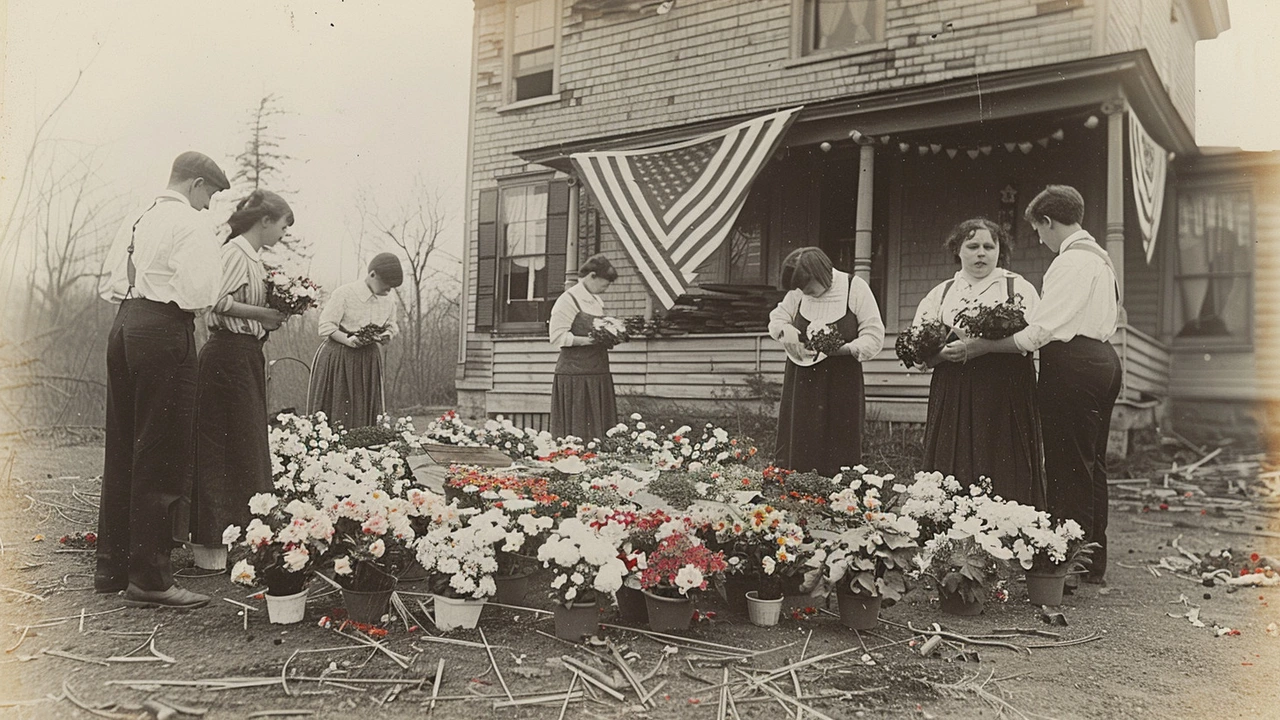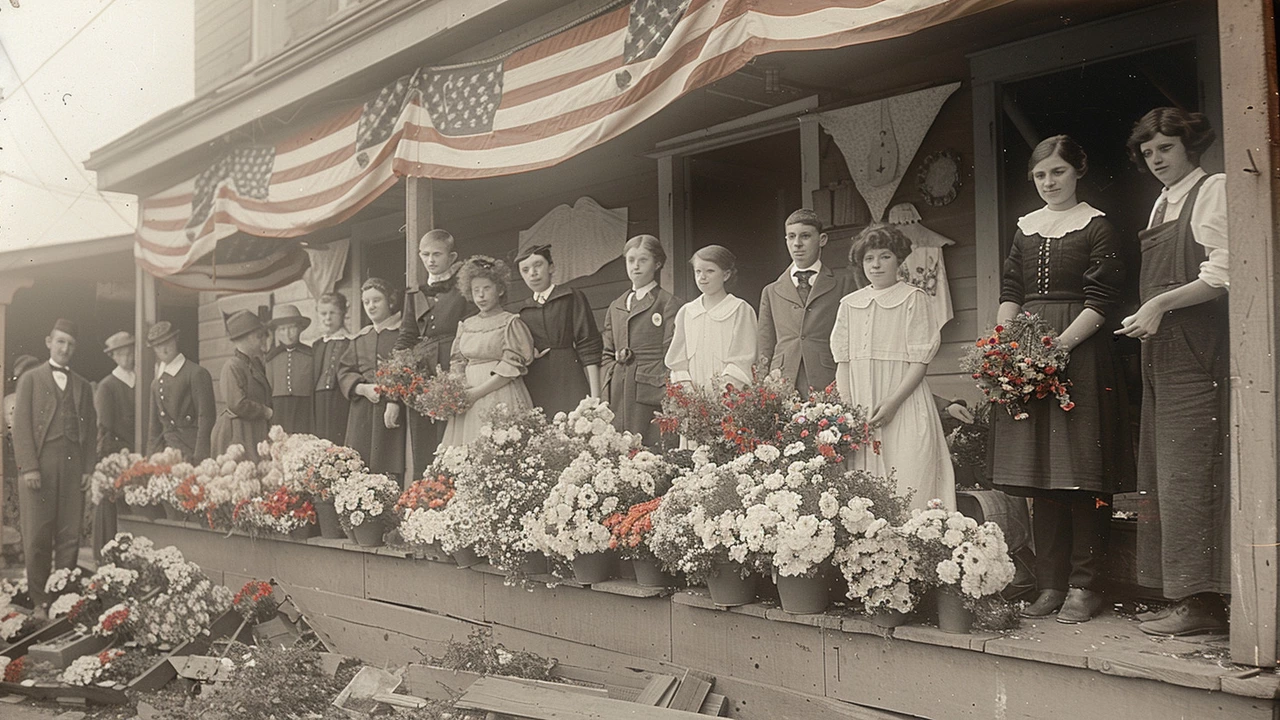The Origins of Memorial Day and Its Hidden Roots
Memorial Day, a poignant annual commemoration to honor the nation's fallen military heroes, has a rich and somewhat unexpected history. While General John A. Logan, a Union general during the American Civil War, is often credited with officially founding the holiday in 1868, the origins of Memorial Day can actually be traced back to a couple of years earlier. The very beginnings of this observance reflected the complex and divided nature of a post-Civil War United States.
Interestingly, the tradition of honoring military dead began in earnest in the former Confederate States in 1866. Women in the South, grappling with the aftermath of the devastating Civil War, took to the cemeteries to decorate the graves of both Confederate and Union soldiers. This act of remembrance and generosity didn't go unnoticed. Northern newspapers picked up on these Southern observances, praising the noble gestures and spreading awareness of the holiday beyond the Mason-Dixon Line. This acknowledgment from the North helped plant the seeds of a more unified national day of remembrance.
General John A. Logan’s Proclamation
In 1868, General John A. Logan, then Commander-in-Chief of the Grand Army of the Republic, recognized the value of a dedicated day to honor the military dead. He issued an order for a national day of remembrance to be observed on May 30th of that year. Logan’s proclamation established what would become known as Memorial Day, though it was originally called Decoration Day due to the practice of decorating graves with flowers and flags. Logan’s choice of May 30th was reportedly because it was not the anniversary of any particular battle, making it an inclusive date for honoring all fallen soldiers.
The Role of Southern Women and Early Observances
It’s vital to note that the early observances spearheaded by Southern women played an instrumental role in shaping Memorial Day. In cities and towns across the Southern states, women gathered to lay flowers on the graves of both Confederate and Union soldiers, epitomizing a spirit of reconciliation. This cross-sectional act of memorialization was not only a testament to their remembrance of the local sons lost in battle but also a gesture of magnanimity towards those who had been their enemies. Such actions did not go unrecognized and were fundamental in fostering a broader, more inclusive nation-wide observance.
The Impact of 'The Blue and the Gray'
The efforts toward reconciliation through Memorial Day were further bolstered by influential cultural works, notably by Francis Miles Finch, a Northern judge, academic, and poet. Finch’s poem 'The Blue and the Gray' beautifully encapsulated the sentiment of national healing. The poem, which offers a metaphorical full pardon to the South, quickly became part of the American literary canon. Its widespread publication played a significant role in making Memorial Day a familiar and accepted tradition across the reunited country. Finch’s verses captured the essence of President Abraham Lincoln’s vision of a nation unified post-Civil War, and Logan’s order establishing Memorial Day often appeared appended to Finch’s poem, underlining the unifying significance of both the holiday and the literary work.
A Nation Moving Towards Unity
Lincoln’s hopes for national reconciliation were palpable in the actions and sentiments expressed during the early evolution of Memorial Day. The commendable spirit of forgiveness and unity demonstrated by the Southern women and praised by Northern audiences and poets like Finch exemplified a collective desire to heal and move forward. The establishment and spread of Memorial Day are emblematic of a broader national convalescence, as the United States began to re-knit the torn fabric of its society.
Memorial Day today has grown to encompass broader meanings of remembering those lost in all military conflicts, but its origins remain deeply entrenched in the efforts of post-Civil War America to reconcile and honor both sides of a painful, divisive conflict. The early observances, marked by the deployment of kindness and mutual respect, laid the foundation for a day that transcends mourning to celebrate unity and remembrance.

The Historical Significance of Memorial Day Traditions
As we observe Memorial Day, it is crucial to reflect on its historical significance and the traditions that have shaped it. Visiting cemeteries, placing flowers on graves, and taking moments of silence to honor those who sacrificed their lives are traditions rich with respect and a deep sense of history. The early traditions, inspired by both Southern women and the formal proclamation by General Logan, continue to resonate in contemporary observances.
The holiday’s roots in actions of reconciliation remind us of our potential for healing, and the ongoing practices keep us connected to the past, ensuring we remember and honor those who paid the ultimate sacrifice for their country. Memorial Day stands as more than a mere day off from work; it is a solemn occasion to ponder the costs of freedom and the enduring legacies of those who have fallen in service to the United States.
An Invitation to Remember
In modern times, Memorial Day serves not only as a reminder of the past but also as an inspiration to foster unity and remembrance in our own communities. As families gather for parades, ceremonies, or quiet visits to cemeteries, the sense of collective memory and respect persists. The enduring legacy of Memorial Day is a testament to the resilience and commitment to reconciliation demonstrated by those who first participated in this sacred day of honor.
Our Collective Duty
As we continue to observe Memorial Day, let us remember its origins and the profound acts of kindness and generosity that helped shape it. Through such reflections, we can appreciate the depth of its significance and the important lessons it teaches us about unity, reconciliation, and respect for all who have served and sacrificed. In this shared history, we find strength and a guiding light for future generations.
